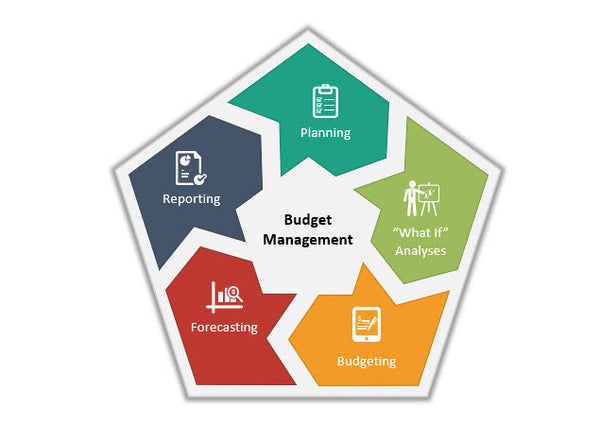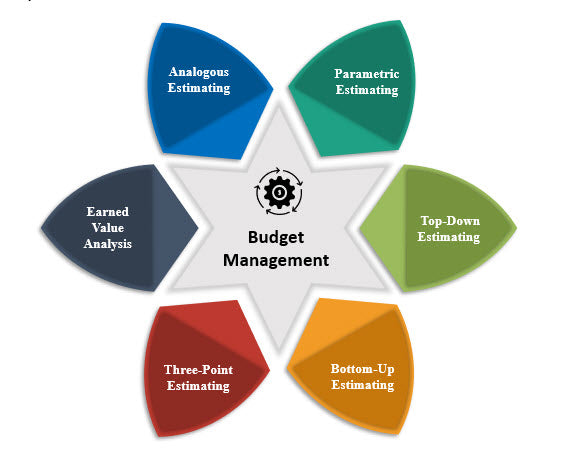Budget Management
Budget management works like a checking mechanism and companies that provide project management services have a working knowledge of trial-and-error methodologies for a long time. It is natural for the untrained eye to dismiss some of their assumptions as trivial or far-reaching, but the same thing can make a lot of difference in the execution process in real time. So, get professional assistance for project management and be a dime a dozen in your field!

Budgeting In Project Management: Methods, And How To Estimate A Project Budget?
Methodologies concerning project management do not have a one-size-fits-all logic. There are, in fact, thousands and thousands of methodologies concerning budget management that are used since there could be a different set of variables at play for every different project.
Some examples of variables are cost and budget, team size, risk factors, timeline, and client/stakeholder collaboration. Currently, there are software tools that can help you manage projects and prepare a basic plan instantaneously. The following are some of the most common methodologies in project management.
- Waterfall Methodology- This is a traditional method of project management in which the ultimate goal is subdivided into a linear sequence of smaller milestones. Each stage of the roadmap is set to be achieved in a certain duration of time. The sequence is as follows: requirements, analysis, design, construction, testing, development, and maintenance. This works best if the end goal is already realized, your client is not willing to experiment, and is very unlikely to change their mind.
- Agile Methodology- Rising out of disappointments because of the stringent nature of waterfall methodology, the agile methodology provides more flexibility since teams can review, assess, and iterate nuances at their will to make the experience of getting the job done better. This makes this method adopt a collaborative approach and is open to data-driven changes as one proceeds along the process. Since there are more possibilities of reassessing the situation, it causes fewer errors and loopholes. This methodology is particularly suitable for projects that are not certain about the end result. Trusting the process rather than the end result is the USP of this method. If your client needs to be involved at every step of the process, this method will serve you well.
- Scrum Methodology- Scrum methodology is a definite form of agile methodology. It provides a framework or a structure based on which the entire job is divided into smaller units called sprints. Each sprint is handled by a small team for not more than two weeks. The project manager gets to choose which individual member gets to run the team and since team leaders change every few weeks, decision-making power is not centralized and everyone in the team can contribute their best brains to the project.
6 Project Management Budgeting Methods :
- Analogous Estimating- The analogous estimating method is primarily using a fully-furnished past project as a blueprint for the current one. Even though certain qualitative and quantitative parameters may alter, inspiration can be drawn from some of your best work from the past. In the cases wherein data and information are lacking and your client needs a budget estimate beforehand, analyzing data into quantifiable variables analogous to previous projects can help you develop scopes for your current project.
- Parametric Estimating- Even though the odds of having two projects that are similar in size, as well as high levels of complexity, are high, parametric estimating seems to be more viable. Parametric estimating is a more specific type of analogous estimating, adjusted for its advanced precise accuracy which can be accounted for by the availability of data and is primarily based on unit rates per activity.
- Top-Down Estimating - A very logical deduction of budget estimation, the top-down method, requires the project manager to make a rough framework of all the possible individual stages and make a rough estimate of the costs involved. The next step is to research to educate oneself about market rates per activity. Once calculated, the total costs per stage will then be compared to the rough estimation of costs, and necessary changes will be made to make the process more cost-effective.
- Bottom-Up Estimating- Contrary to the previous method, bottom-up estimating is based on the integration of all costs concerning all the basic units of the processes to find the overall costs by drawing in variables like the required time for project completion, the number of laborers, etc. The authenticity of cost information is directly proportional to the final estimation of the budget before you hand over the information to your client.
- Three-Point Estimating- This method is used especially when there is very limited data. Since the margin of error is astronomical, three-point estimating allows one to ruminate on risk factors. It is quite mathematical and uses probability calculation to measure the probability of a most likely outcome, the pessimistic estimate, and the optimistic estimate. The pessimistic estimate is the amount of work needed to complete the project if risks and negative conditions factor in whereas an optimistic estimate is the amount of work needed to ensure project completion without any risk hindering its progress.
- Earned Value Analysis- Earned Value Analysis comes into effect once the project work commences. It is done to analyze the real value and ideal value of costs at all stages of the project. This produces a broad range of working knowledge for the future and a better understanding of risk assessment and management.
Importance Of Project Budgeting
What serves as the spine of a successful project is a great working formula combining time, quality, and budget. While time and quality are subjective parameters set by your client, budget estimation and management are something your client will be looking up to you for. Without having a framework to assess risk factors, sudden and prolonged downtime can lead to a devastating end.
From failing to commit to providing deliverables timely to the complete collapse of the project itself in the case of mishandling budget estimation, project budgeting helps actualize ideas. Imagine budget estimation as the muscles that make up the limbs of the body. Without an adequate amount of money flowing in, there is no way you can move the body of work!





